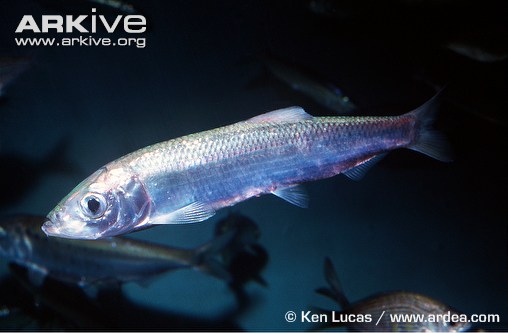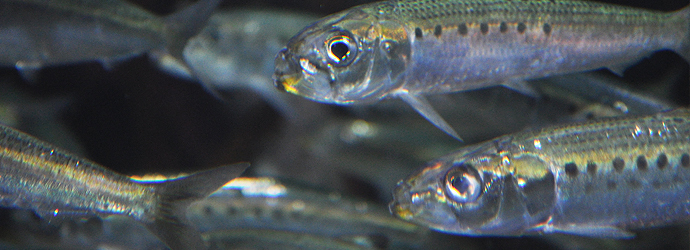Adaptation
Gills slits and number of vertebrae have been found to be
different between different locations of Pacific herring
populations. This could be due to the temperature and other
environmental factors. They also developed a swim bladder in the
Jurassic period, when this class of fish (Actinopterygii) was
discovered. This allowed them to achieve "weightlessness", so
that they could freely move through the water. Their coloring
has also been shown to be an adaption. They are mostly silver in
color so that they can easily blend in with the surrounding
water. (See image above) This allows them to sometimes
allude their predators.
Pacific herring
populations. This could be due to the temperature and other
environmental factors. They also developed a swim bladder in the
Jurassic period, when this class of fish (Actinopterygii) was
discovered. This allowed them to achieve "weightlessness", so
that they could freely move through the water. Their coloring
has also been shown to be an adaption. They are mostly silver in
color so that they can easily blend in with the surrounding
water. (See image above) This allows them to sometimes
allude their predators.
Clupea pallasii are obviously a species of fish, so they move via swimming. They only have dorsal fins which allow them to move throughout their environment. They have eyes which allow them to see and seek out prey and their eyes also help them to see eminent danger. Their mouths also play a huge part in capturing prey, since they swim with their mouths open to take in their food.
The fish have also been able to adapt to different diseases like VHS (see interactions page). Those fish exposed to VHS at the juvenile stage are more likely to be able to fight of the disease if they encounter it again. The fish produce antibodies after exposure to help prevent infection. This however does not always work. Some Pacific herring do still die after a second round of exposure. For more detailed information on how Clupea pallasii adapt to this virus please visit this great reference article.
